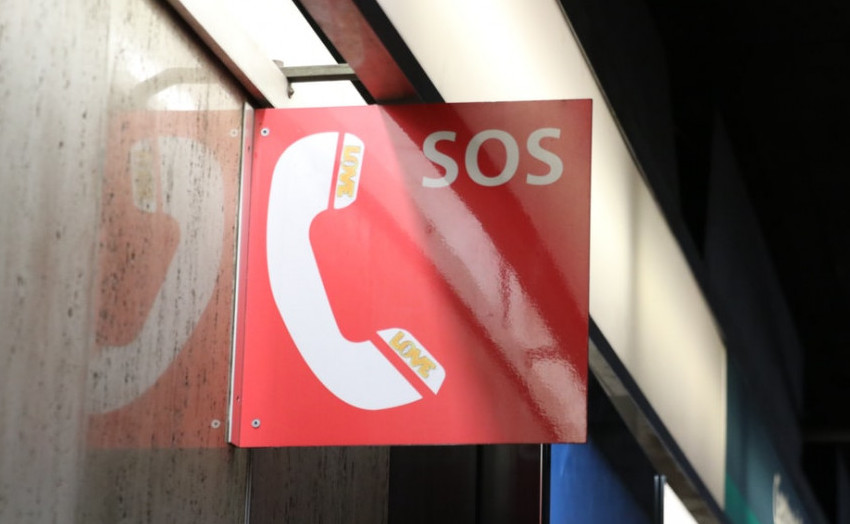Let’s look at more of my most recent emergency calls. Again, I am not finding fault with anyone. Even the worst circumstances provide an opportunity to learn, and I am all about prevention!
Part 1 is here.
5. Fishhook Embedded in Lip
Dogs that go anywhere where there are fishhooks will get into trouble – they are attracted to the bait attached to the hook, or even a residue of smell. Fishhooks are quite difficult to remove, often requiring surgery. If a dog manages to swallow the hook, it can snag anywhere in the gastrointestinal (GI) tract, and if there is a line attached that can create a whole new set of problems. Perforation of the GI tract can even lead to death.
I’ve even seen a case where the owner was practicing casting in the back yard while the dog was around. The fishhook ended up firmly attached to the dog, which required emergency surgery.
Be extremely careful using fishhooks around dogs, or taking them to an area where fishhooks might be, such as a lake, beach or boat. If your dog is going to be around fishhooks, consider Outfox for Dogs.
6. Urinary Blockage in a Male Cat
Male cats have a very narrow urethra, putting them at risk for urinary blockage. Things that can cause a blockage include crystals, mucous or blood (if there is inflammation in the bladder). Blocked male cats will repeatedly squat and strain to urinate and produce little to no urine. Occasionally a tiny amount of urine will dribble out but don’t confuse this with proper urination.
Female cats can experience urinary blockage, but it is quite rare, due to anatomical differences. The symptoms are identical to males.
While my focus in this section is male cats, both male and female dogs can experience urinary obstruction less commonly.
The typical blocked cat is an obese, neutered male indoor cat. The typical blocked cat also eats dry food, which is not a species-appropriate diet for any cat, not just males.
Urinary blockages are life threatening and will result in death if not treated promptly.
7. Vomiting and Diarrhea in a Dog
Vomiting is an animal’s natural defense against ingesting harmful items. This is the most common cause of vomiting in dogs. Vomiting frequently progresses to diarrhea.
Many dogs eat inappropriate objects, which can sometimes cause a blockage in the intestines. A blockage, or obstruction, will usually result in repetitive vomiting, without defecating. Nothing is passing through the GI tract.
A general rule to follow is if a dog vomits one or two times, but is normal otherwise, then it’s not an emergency. Three episodes of vomiting within a day merits a call to the veterinarian.
Enough vomiting and/or diarrhea can cause dehydration.
Diarrhea by itself is usually not an emergency, although if it lasts longer than one or two days, you should call your veterinarian. Diarrhea with red blood in it, or a black color is also an emergency.
Do NOT feed your vomiting dog or cat. Do NOT give them anything orally. Resting the stomach is a good thing, which dogs and cats will sometimes do on their own. If 6 – 12 hours of nothing orally doesn’t halt the vomiting, contact your veterinarian. This is a rough guideline assuming your dog or cat is healthy with no preexisting medical conditions.
8. Vomiting and Diarrhea in a Cat
Cats that go outdoors and hunt can have a similar pattern of stomach and intestinal upset to dogs that have dietary indiscretion.
Cats do sometimes eat foreign items, most commonly linear objects. Examples are string, rubber bands, pantyhose, yarn, or tinsel. These sorts of objects can cause a devastating type of obstruction that generally requires emergency surgery.
However, it is important to note that most vomiting and diarrhea in cats is related to other conditions that are typically long-term. One medical somewhat condition that can cause this is IBD (dogs get IBD as well, less often than cats). Although serious, IBD and other medical conditions are not an emergency. Also, note that a “hairball” IS vomiting. Vomiting and diarrhea is a “GI” problem, meaning gastrointestinal, or referring to the stomach and intestines. With a cat, if the problem is long-term, always start by making sure he or she is eating a species-appropriate diet. While a long-term pattern of vomiting (or hairball) more than once a month isn’t an emergency, it should still prompt a call to your veterinarian during regular hours.
As with dogs, three episodes of vomiting in a day should cause you to call the veterinarian.
9. Difficulty Giving Birth
Dystocia is a general term for difficulty associated with giving birth. These sorts of calls can be among the most stressful for both the pet guardian and the veterinarian.
If your dog or cat is pregnant, there are many items that must be taken care of far in advance of the due date. Please do not wait until your pet is having an emergency giving birth to call the veterinarian.
Breeding dogs or cats (or any other animal) is not something to take lightly, or to be done as a hobby. Spay and neuter your pets and do not allow them to get pregnant. If they do get pregnant before they are spayed or neutered, please contact your veterinarian as soon as possible to discuss your options.
Do not wait until the last minute to deal with this.
10. Breathing Problems
Dyspnea is another general medical term meaning abnormal breathing or difficulty with breathing. There are many possible causes of dyspnea ranging from infections to allergies, trauma, asthma, and heart disease, just to name a few.
Sudden onset is an emergency and requires a call to the veterinarian.
